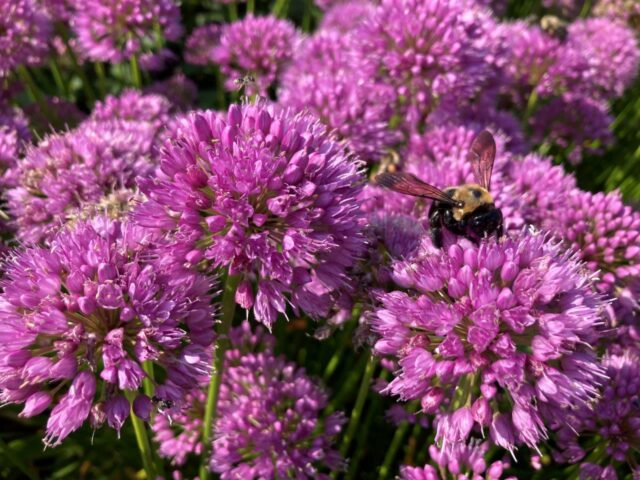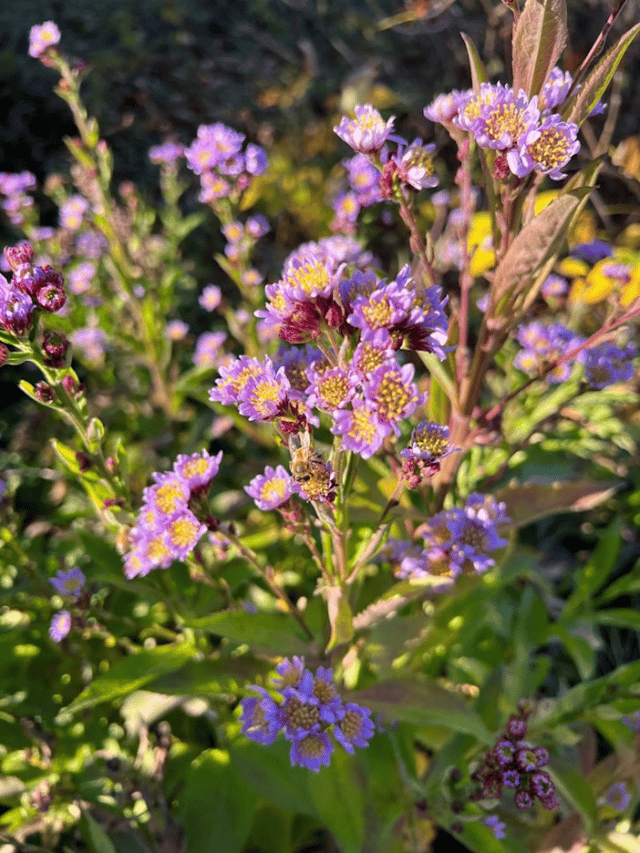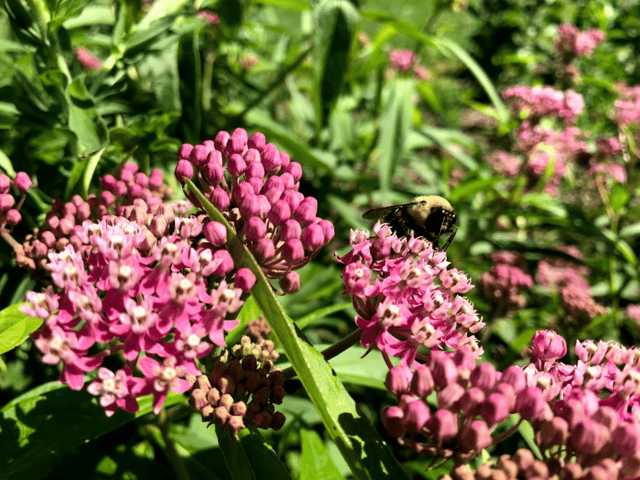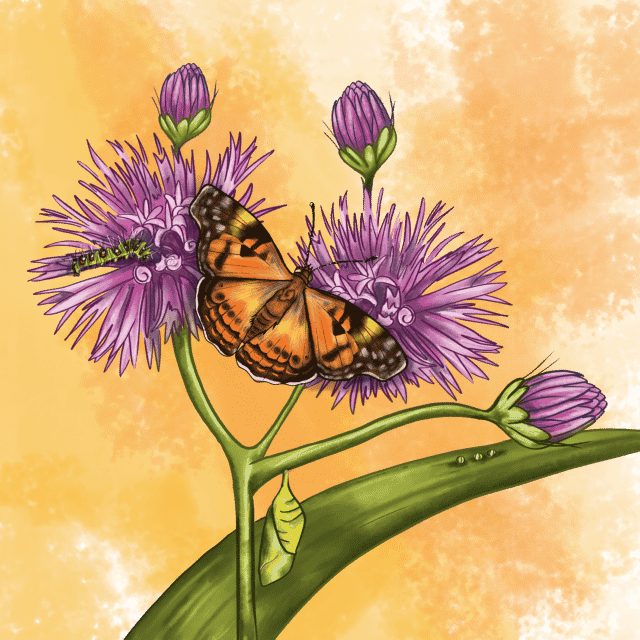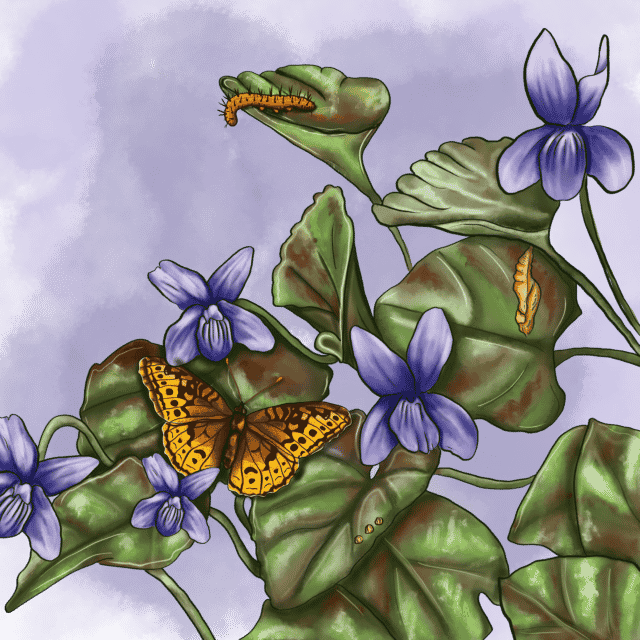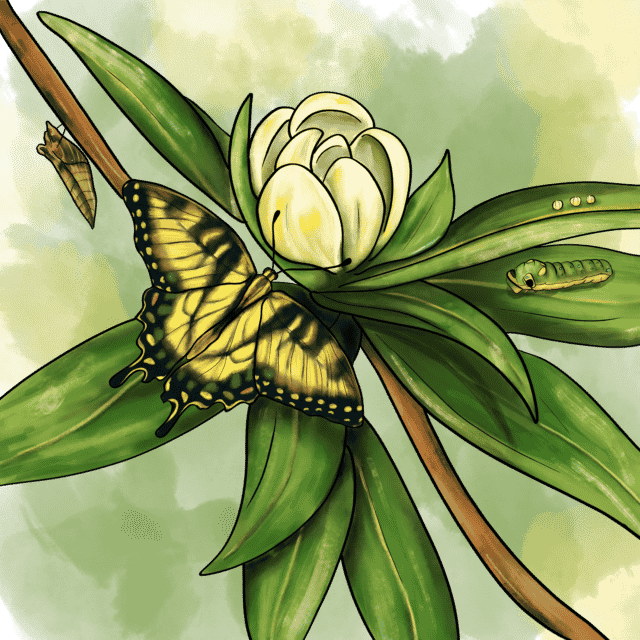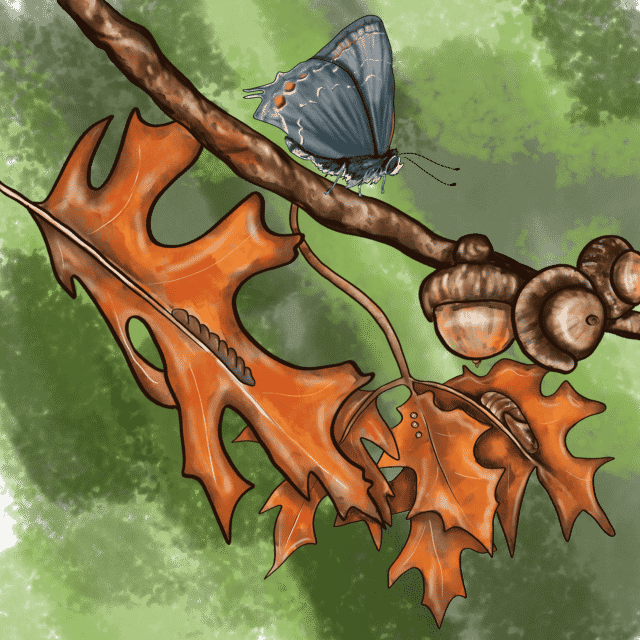

Peeking up above the Echinacea, Phlox, and turtlehead in the Holden Arboretum’s, Arlene and Arthur S. Holden Jr. Butterfly Garden are the bright red, cone-shape infructescence of the staghorn sumac. Although sumac gets a bad reputation for being poisonous, these berries are no red flags. In fact, most sumac are safe to eat, and delicious.
Sumacs belong to the family Anacardiaceae. Other members of this family include cashew, mango, and pistachio (1). Many Anacardiaceae produce urushiol, the chemical responsible for the itchy, blistering rash you get after unexpectedly hiking through one of the more infamous sumac cousins: poison ivy (1). Poison oak and poison sumac also belong in this family tree (pun intended).
Sumac is a prolific group of plants. They can be found on every continent and include around 250 species (2). There are 5 native sumac species in the state of Ohio (2). Of these, only one—the aptly named poison sumac, Toxicodendron vernix, is poisonous (2). This species inhabits bogs, fens and other constantly wet, swampy areas and has green drupes that turn white when ripe (2). The other 4 Ohio species all belong to the genus, Rhus, and sport red, edible drupes. As a rule of thumb, sumacs with red berries are safe while those with white berries should be avoided (2). The most common wild species at Holden is the staghorn sumac, Rhus typhina.

In the garden, sumacs serve an important ecological role. They are the host of the red-banded hairstreak butterfly caterpillar and some species of moths (3). The shrubby trees also provide nectar and shelter to many pollinators, like some carpenter bees that lay their eggs inside the branches (3). In the summer, over 300 different songbirds have been known to feed on the sumac fruit, and in the lean winter months the twigs are eaten by rabbit and deer (3).

Animals aren’t the only creatures to benefit from this amazing plant. The tree has been used to weave ceremonial baskets by native peoples (5), preserve food in the Middle East (6), as a fabric dye (5) and as an ingredient in making wood varnish (2). The fruits are further used in beekeeping: the smoke from the burning drupes is used to calm bees for safe handling (7). Different parts of the sumac tree have been used medicinally by many cultures around the world. The plant is known to have antibacterial, antifungal, and antioxidant properties (6) and has been used in treating sore throats, dysentery, infections, wounds, and cold sores.
The red berries are edible and have a wonderful lemon-y flavor. You can find the red spice made from sumac’s dried, crushed berries in Middle Eastern markets where it is a staple in that cuisine. Sumac spice is wonderful in marinades for chicken and kebab or in salad dressings. If you’ve never tried a Lebanese Fattoush salad, I cannot recommend it enough.
During the summer months, sumac’s botanical and citrusy notes are especially refreshing. One of the most popular ways to experience this delicacy is in a lemonade-like drink called sumac-ade. This drink was enjoyed by the Cherokee peoples (8) and was popular in the Southern United States during the Civil War (9).
To make your own sumac-ade, rinse sumac berries under cool, running water and remove the small, fuzzy fruits from the stem. Add at least 2 cones worth of berries per quart of room-temperature water. Gently crush the berries and let steep for 3-24 hours. Don’t worry if it comes out too strong: you can water down the concentrate to your own taste later on. Once brewed, strain the sumac-ade through a coffee filter and, if you’d like, add your sweetener of choice. I sweeten mine with a simple syrup made from melting 1 part sugar and 1 part local honey into 2 parts water. Serve your bright red sumac-ade over ice and savor the taste of summer. Just be sure to leave some berries on the trees for the local wildlife!


Heather Wade
Gardener
Hedy Wade (she/her) is the gardener at the Holden Arboretum’s, Arlene and Arthur S. Holden Jr. Butterfly Garden. She began her career in wildlife conservation on the island of Maui in Hawai’I where she worked with invasive species before moving on to native Hawaiian plants. This is where she fell in love with botany. During Covid, Hedy moved back to her hometown of Rocky River, Ohio and began to study Ohio ecosystems and started work at Holden in May 2022. In her free time, she enjoys painting watercolors and volunteering with her therapy dog, Nalu.
